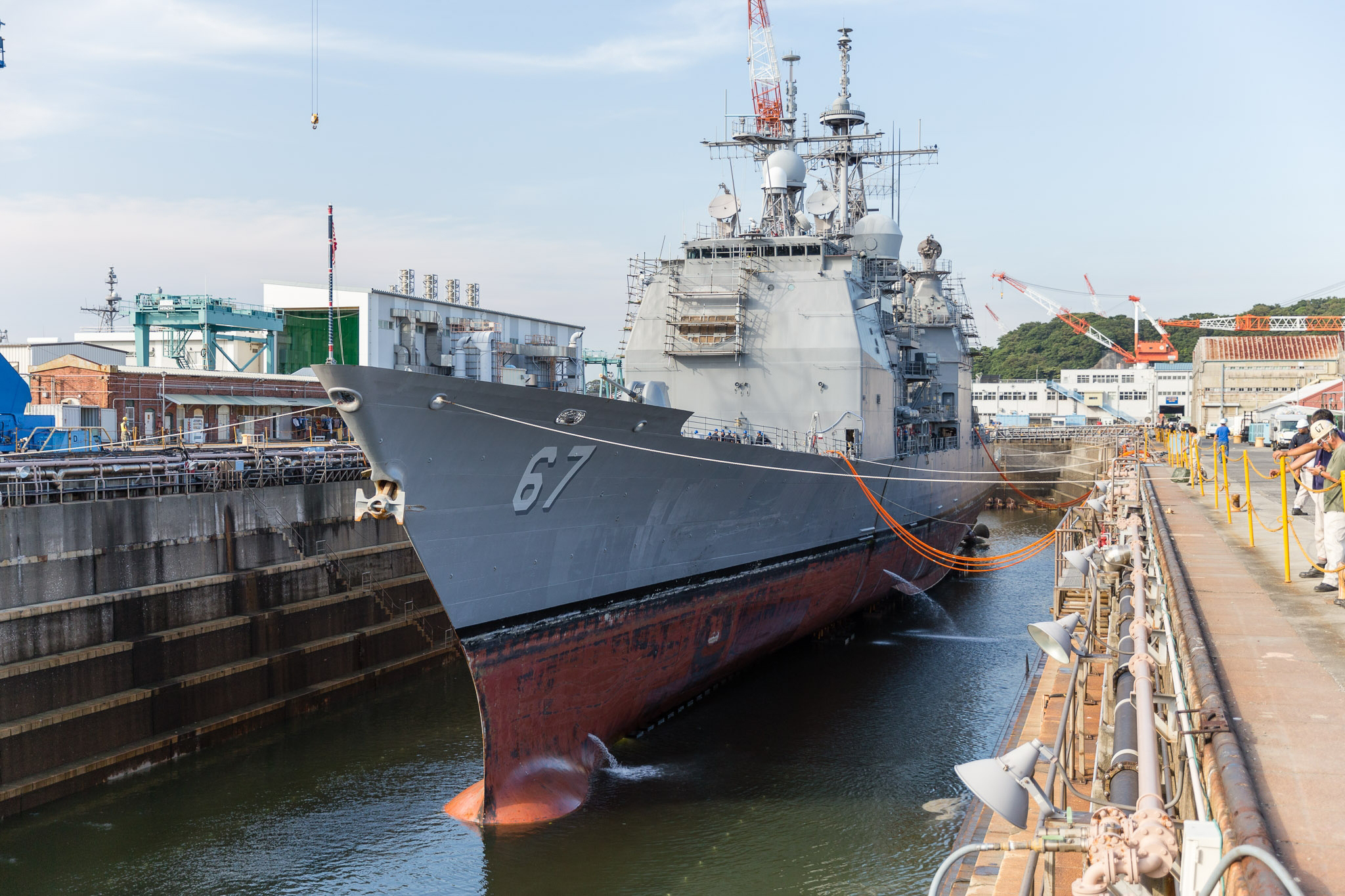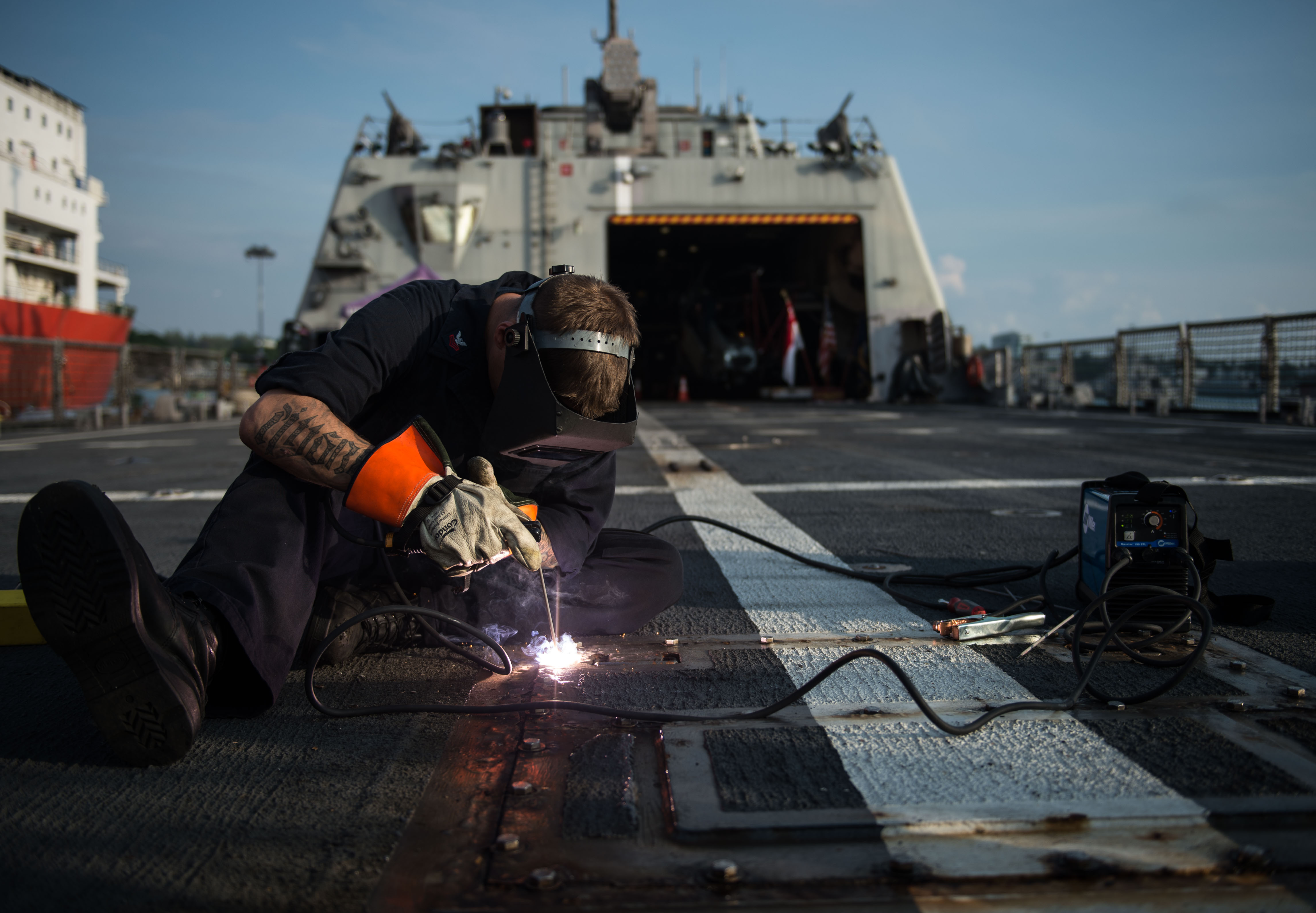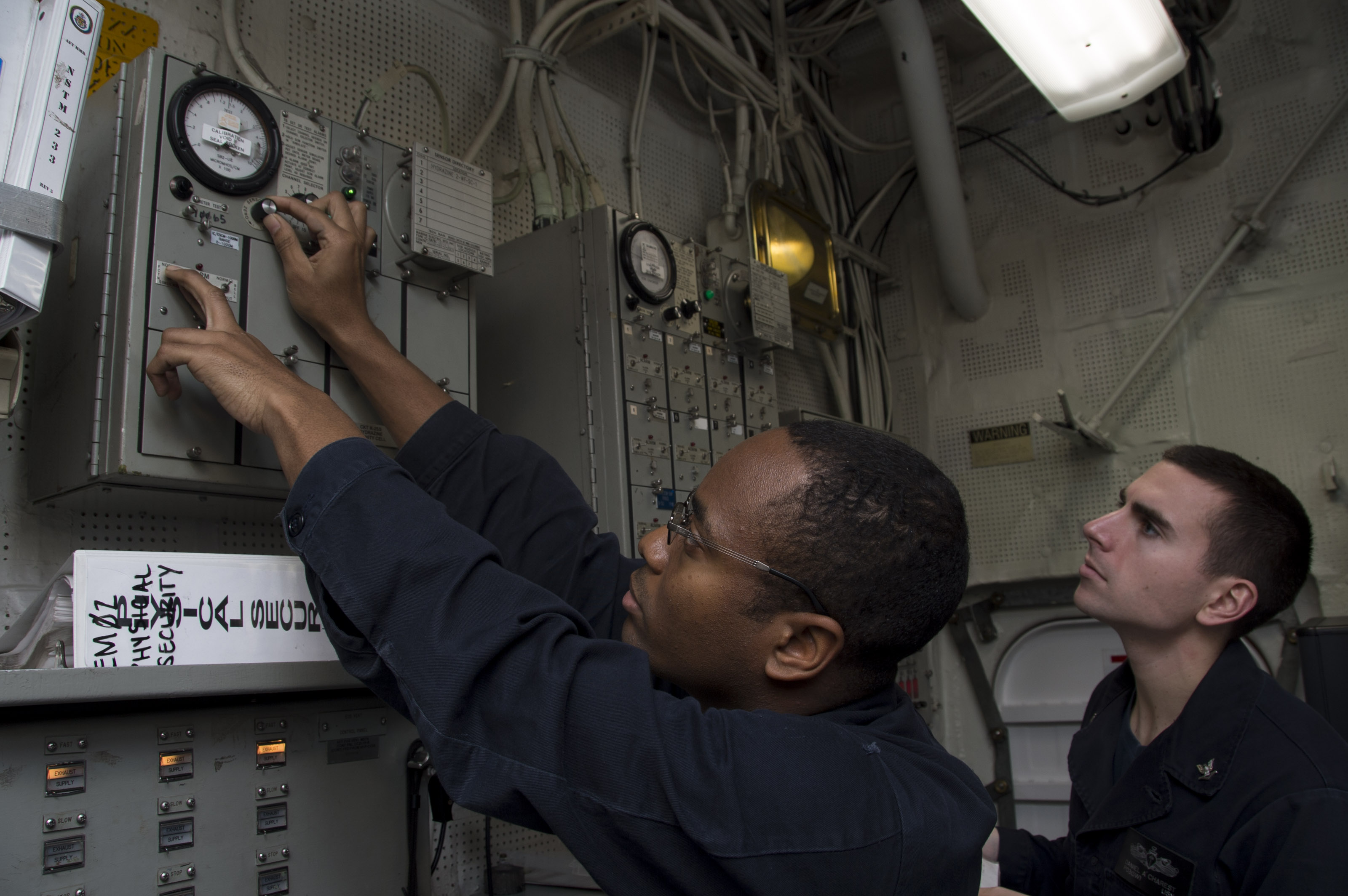
This post has been updated to add the title of Cmdr. Cedric McNeal.
SAN DIEGO – The Navy is projecting a significant increase in ship maintenance and modernization work in the next couple years, and several officials are concerned private industry does not have the capacity to keep up.
Naval Sea Systems Command’s Deputy Commander for Surface Warfare (SEA 21) and Commander of Naval Regional Maintenance Centers Rear Adm. Jim Downey said at the American Society of Naval Engineers’ annual Fleet Maintenance and Modernization Symposium that Fiscal Years 2018 through 2020 would bring a workload of about 135 percent the size the Navy has seen in recent years. One contributing factor is the first wave of Littoral Combat Ship maintenance availabilities – in fact, according to Cmdr. Cedric McNeal, the deputy program manager for the frigate program office in the program executive office for LCS, FY 2018 will be the first year the Navy makes a major investment in LCS modernization work, with availabilities starting in 2019. In the current five-year Future Years Defense Program, LCS ships will go into 27 maintenance and modernization availabilities.
“I am worried in the out-years we will not have the private yard capacity we need to handle all the force maintenance requirements. Private yards have done a good job absorbing work that has come their way during the force reset, but the prospect of a still greater maintenance workload in the out-years, with additional Littoral Combat Ships coming online and a potentially larger force overall, causes me concern,” commander of Naval Surface Forces Vice Adm. Tom Rowden said at the event, held earlier this month at the San Diego Convention Center.
“This concern extends beyond dry dock capacity shortfalls, which still loom large. [Forward Deployed Naval Force] is at capacity, for example. There is simply more work than the current workforce can accomplish. In [the continental United States], I have pushed to expand the set of yards capable of and familiar with performing Navy work. Last year, for example, we performed an emergent drydock repair at the Vigor Shipyard in Portland, Ore. On the East Coast, USS Ramage (DDG-61) is executing an out-of-homeport availability at the builder’s yard down in Pascagoula, Miss.”
At the same time, the Navy is trying to boost its sailors’ ability to perform more maintenance work on the ship without outside assistance. While this wouldn’t make much of a dent in the looming surge in workload, it could cut down on contractor maintenance costs, and it would lead to a more self-sufficient fleet capable of operating in complex environments.

In the case of LCS, the ship concept was designed around a minimal crew, with the bulk of maintenance activities being conducted by contractors. Though the crew size has been increased over time, the LCSs operating out of Singapore have come back to port about every 25 days for a contractor-led maintenance availability, which includes basic tasks such as monthly system checks. In the wake of last year’s LCS Review, and as LCS maintenance and modernization moves from the program acquisition office into the Navy’s surface ship lifecycle maintenance portfolio, several officials said the LCS crews would begin taking on more maintenance responsibilities themselves.
“It’s clear what the operational fleet’s demand is for us, which is to make sure the ship can be maintained, and the sailors where possible can do that. So we are focused on training for the sailors,” Downey said, adding that his office was making sure they had the equipment, the spare parts, the technical documentation and more to help the ship’s crews and sailors at the Regional Maintenance Centers conduct more LCS work themselves.
“The key is to increase sailor ownership and decrease the reliance on contractors and [original equipment manufacturers]. I recognize that the Littoral Combat Ship manning does not support shifting the entire maintenance workload to the crew, as their capacity is limited. But still I am committed to maximizing the amount of planned maintenance that we perform by the LCS crew,” Rowden said.
“From talking to the folks on the Littoral Combat Ship, one of the frustrating things for them was, it was just kind of the way we set it up, but contractors would come aboard and do the work but the sailors would have to hang all the tags … so it was kind of like, rather than having the sailors do the work, we would just have the sailors do all the setup and teardown, and then the contractors would step in and do the work and the sailors would watch them do the work. It’s crazy. There’s some maintenance items that are appropriately done by the depot – reset and safety … but the day-to-day weighing of CO2 bottles or, we just had to get after that.”
Rowden added that there’s still an ongoing conversation on the division of labor between sailors on the ships’ crews and the Regional Maintenance Centers, along with the role of contractors.
Beyond LCS, though, Navy leaders at the ASNE conference expressed concerns about the declining ability of ships’ crews to take care of their own ships. Sailors today have fewer opportunities to become proficient at ship maintenance during shore duties, meaning sailors going to sea bring with them less knowledge about how the ship and its systems work.

Rear Adm. Mark Whitney, director of fleet maintenance for U.S. Fleet Forces Command, said at the conference that “the vast majority of the [casualty reports] that I read on any one given day say ‘request ship’s force tech assist.’ That’s not a self-sufficient sailor at sea.”
In a contested operating environment with denied communications, he noted, “you are not going to have the ability to phone home.”
Whitney said the Navy’s operational and maintenance communities had to find a way to get sailors more proficient at fixing downed systems and repairing their ships while underway. While a complex challenge to address, he said part of the solution would be ensuring that crews can begin pre-deployment training on time – without delays from ship maintenance availabilities going long – and ensuring that that training time includes an emphasis on maintaining and repairing the ship.
“That’s years of constrained funding that have taken risk on things like tech manuals, [Engineering Operational Sequencing System], [Planned Maintenance System], and resourcing maintenance, to where what has been the risk-taker has been compressing that training timeline,” Whitney said.
“We’re in an environment where that risk is unacceptable.”





